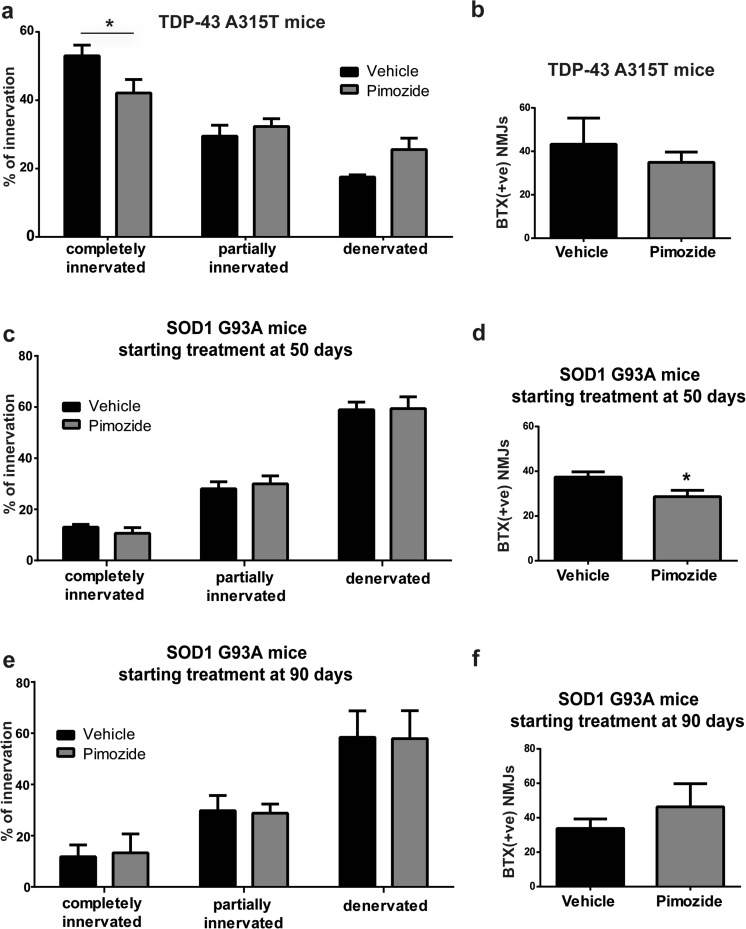Fig. 4.
Pimozide treatment did not improve neuromuscular junction (NMJ) integrity in ALS mice. (a, b) Tibialis muscles of TDP-43A315T (n = 4 per group, 2 females and 2 males) were analyzed for neuromuscular junction integrity. An average of eight sections per mouse was analyzed; data are expressed as mean ± sem of NMJ/section/mouse. Pimozide reduced the percentage of completely innervated NMJ compared to vehicle-treated mice (two-way ANOVA analysis: interaction p = 0.0146, innervations p < 0.0001, treatment p > 0.05 followed by uncorrected Fisher’s LSD post hoc test). No differences were observed in the total number of post-synaptic NMJ (data are mean ± sem of BTX + ve NMJ/section/mouse, p > 0.05 by Student T test). (c, d) Tibialis muscles of SOD1G93A treated from 50 days of age (n = 3 per group) were analyzed at 120 days of age for neuromuscular junctions integrity. An average of nine sections per mouse was analyzed; data are expressed as mean ± sem of NMJ/section/mouse. No differences were observed in NMJ innervation/denervation (two-way ANOVA analysis: interaction p > 0.5, innervations p < 0.0001, treatment p > 0.05 followed by uncorrected Fisher’s LSD post hoc test). Total number of post-synaptic NMJ was instead reduced in pimozide-treated mice (data are mean ± sem of BTX + ve NMJ/section/mouse, p = 0.0387 by Student T Test). (e, f) Tibialis muscles of SOD1G93A treated from 90 days of age (n = 3 per group) were analyzed at 120 days of age for neuromuscular junctions integrity. An average of nine sections per mouse was analyzed; data are expressed as mean ± sem of NMJ/section/mouse. No differences were observed in NMJ innervation/denervation (two-way ANOVA analysis: interaction p > 0.5, innervations p < 0.0001, treatment p > 0.05 followed by uncorrected Fisher’s LSD post hoc test) nor in total number of post-synaptic NMJ (data are mean ± sem of BTX + ve NMJ/section/mouse, p > 0.05 by Student T test)

